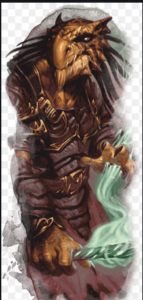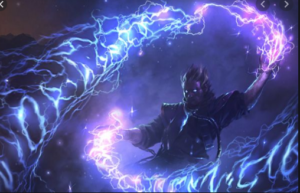These spells scare me to death! Phantasmal force and therefore the phantasmal killer has scared many of my NPCs to death, anyway. These two spells are a number of the weird illusion spells within the game since they directly and aggressively assault the minds of other creatures, instead of creating a harmless, illusory sensation.
These spells are a must-have for any illusionist wizard but also are broadly available to several different classes and subclasses. They’ll seem sadistic, but characters who believe that evildoers deserve their comeuppance, or that the ends justify the means, will find a bevy of delightfully terrifying uses for these phantasmagorical spells.

Phantasmal force 5E
- Casting Time: 1 action
- Range: 60 feet
- Components: V, S, M
- Duration: Concentration, up to 1 minute
- Scales: No
- Casters: Arcane Trickster, Bard, Sorcerer, Wizard
There are two “phantasmal” spells in D&D: phantasmal force and phantasmal killer. In past editions of D&D, there have been many other phantasmal spells too, like a phantasmal thief, phantasmal injury, and phantasmal strangler.
While these other spells haven’t been updated to D&D’s current edition, all phantasmal spells have something in common: they create an illusion so realistic and frightful that the target believes it’s capable of being harmed by it.
Phantasmal force is that the weaker of the 2 spells a 2nd-level illusion spell available to bards, sorcerers, wizards, Arcane Trickster rogues, and warlocks of the Archfey and therefore the Great Old One. Simply, this spell allows you to craft an illusory object perceivable only by the target of the spell. As long because the spell lasts, the target interacts with the thing as if it were real, and justifies away any event that might suggest it isn’t real. If the illusory object is harmful, it can harm the target—dealing with psychic damage, of course.
The phantasmal killer may be a deadly spell that not only debuffs a creature with the potent frightening condition but also deals with psychic damage each turn until the target makes a successful saving throw and ends the spell. If your party is in a position to impose an obstacle thereon creature’s Wisdom saving throws, it’d never be ready to escape the nightmare you’ve woven for it!
The phantasmal killer has some slightly confusing wording. Within the past, some people have posited that the continued damage occurs albeit the target succeeds on the primary saving throw and resists becoming frightened. To clear up any confusion, the spell ends if a creature succeeds on any of its saving throws, including the initial save.
This guarantees that the spell deals a minimum of 4d10 damage and frightens the target for one turn. Otherwise, in my opinion, this spell may be a bit too weak compared to other 4th-level spells.
The phantasm includes sound, temperature, and other stimuli, also evident only to the creature. The target can use its action to look at the phantasm with an Intelligence (Investigation) check against your spell save DC. If the check succeeds, the target realizes that the phantasm is an illusion, and therefore the spell ends. While a target is suffering from the spell, the target treats the phantasm as if it were real. The target rationalizes any illogical outcomes from interacting with the phantasm.

